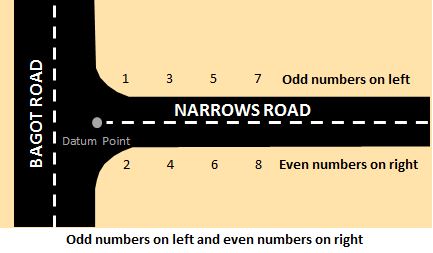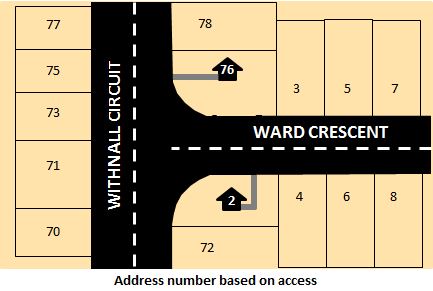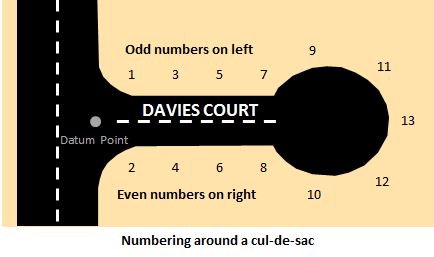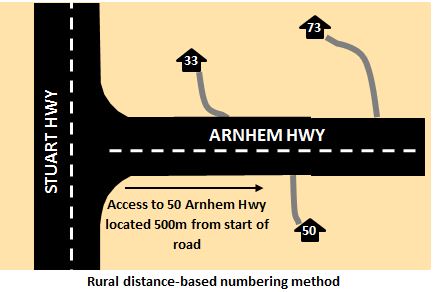Property and street addresses
Property and street addresses need to be unique so they can be clearly identified and located especially in an emergency and comply to the Australian/New Zealand standard.
Go to the Standards Australia website to read the standard.
All new addresses in the NT meet this standard where practical.
Addresses are managed by the Survey Branch of the Department of Lands, Planning and Environment.
Rules for addresses
Addresses need to be logical and easily understood to enable sites to be easily located.
Numbering should progressively increase from the start of the road so that properties on the left hand side are odd numbers starting at 1, and properties on the right side are even.
Addresses are assigned according to the location of the property's main access point, like a driveway, or the position along a road where the public would normally gain entry.
Official addresses contain a number, road name and location or suburb.
How new addresses are created
When a new development is being planned or built you must contact the Survey Branch as soon as possible as property numbers need to be assigned before the individual properties are occupied.
Information, guidelines and forms for the naming of roads in new subdivisions are available on the Place Names Committee website or Place Names Act 1967.
If you have any queries contact the Place Names Committee by emailing place.names@nt.gov.au or calling 08 8995 5334.
Urban addresses
Address numbers for each street start at the beginning of the road and go to the main entry point or driveway of each property.
For example, a street with eight properties with four on each side will begin the numbers at the beginning of the road with the address numbers 1, 3, 5 and 7 on the left and the numbers 2, 4, 6 and 8 on the right.
Corner blocks
Properties located on a corner shall be assigned an address based on the access point to the property. An address number on the other road may be reserved for future development.
For example, in the diagram below, property 76 is on the corner of Withnall Circuit and Ward Crescent. Its address is 76 Withnall Circuit with a reserve address of 1 Ward Crescent.
Owners of properties with a reserved address may apply to the Survey Branch to have their address changed to the alternative address if the main property access is on the other road.
Cul-de-sac addresses
Address numbers for cul-de-sac streets are assigned in the same way as urban addresses up to the head of the cul-de-sac.
For example, a street with 13 properties with six on each side, and one at the head of the cul-de-sac, will begin the numbers at the beginning of the road in the same way as an urban address, finishing with 13 at the head of the cul-de-sac.
Rural addresses
In the rural area, address numbers are assigned by dividing the distance in metres from the start of the road to the property's main access by 10 and then rounding to the nearest odd number on the left or even number on the right side of the road.
For example, if a property's main access point or driveway is 500 metres from the start of the road on the right, it will be given the street address of 50.
Contacts
For help and more information contact the Survey Branch of the NT Department of Lands, Planning and Environment.
Phone
08 8995 5362
Give feedback about this page.
Share this page:
URL copied!



